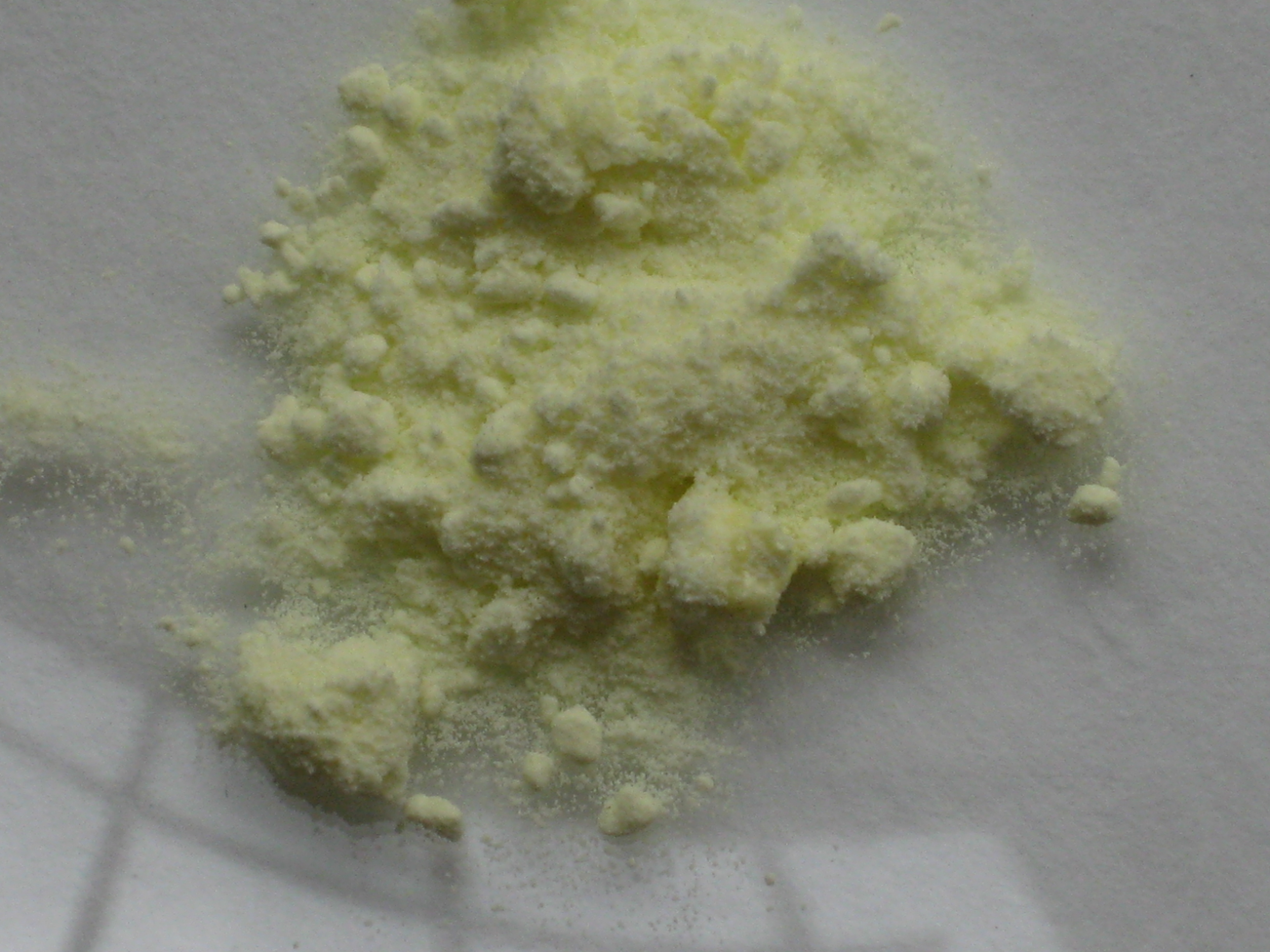
- •Electron configurations of chalcogens
- •Some physical properties of chalcogens
- •Physical properties
- •Allotropes
- •From left to right: gray and red selenium
- •History Of Discovery
- •Occurrence Abundance of chalcogens in the Earth crust
- •Table. Some common sulfide minerals
- •Native selenium
- •Preparation
- •Industrial uses of sulfur
Course Syllabus |
Module 1 |
Module 2 |
Module 3 |
Module Exams |
Final Exam |
Labs |
Quiestions & tasks |
Handbook |
||||||||||||
Periodic table |
s-elements |
p-elements |
d-elements |
Fotogallery |
Video |
|
|
|
||||||||||||
S [He]2s22p4 Se [Ne] 3s23p4 Te [Ar] 4s24p4 Po [Kr] 5s25p4
|
Chalcogens |
|||||||||||||||||||
Lab |
Home tasks |
Test problems |
Video |
Photos |
||||||||||||||||
Properties Of Chalcogens |
||||||||||||||||||||
Chemical |
Physical |
|
||||||||||||||||||
Use |
Occurrence |
Preparation |
||||||||||||||||||
History Of Discovery |
||||||||||||||||||||
|
Electrode potentials |
|||||||||||||||||||
Oxidation State |
Compounds Of Chalcogens. Chemical And Physical Properties Overview |
|||||||||||||||||||
S |
Se |
Te |
Po |
|||||||||||||||||
-2
|
H2S |
H2Se |
H2Te |
H2Po |
||||||||||||||||
S2- |
Se2- |
Te2- |
Po2- |
|||||||||||||||||
Me2S |
Me2Se |
Me2Te |
Me2Po |
|||||||||||||||||
|
|
|
|
|||||||||||||||||
|
|
|
|
|||||||||||||||||
|
|
|
|
|||||||||||||||||
-1 |
H2Sn, Me2Sn |
H2Sen, Me2Sen |
H2Ten, Me2Ten |
|
||||||||||||||||
0 |
Sn |
Sen |
Ten |
Po |
||||||||||||||||
1 |
S2Cl2 |
|
|
|
||||||||||||||||
|
|
|
|
|||||||||||||||||
|
|
|
|
|||||||||||||||||
2 |
|
|
|
PoX2 (PoCl2...) |
||||||||||||||||
|
|
|
PoH2 |
|||||||||||||||||
|
|
|
|
|||||||||||||||||
3 |
S2O42- |
|
S2O42- |
|
||||||||||||||||
4 |
SO2 |
SeO2 |
SO2 |
PoO2 |
||||||||||||||||
SO32- |
SeO32- |
TeO32- |
PoX4 |
|||||||||||||||||
|
|
|
|
|||||||||||||||||
5 |
S2F10 |
|
|
|
||||||||||||||||
|
|
|
|
|||||||||||||||||
|
|
|
|
|||||||||||||||||
|
|
|
|
|||||||||||||||||
|
|
|
|
|
||||||||||||||||
6 |
SF6 |
|
|
PoO3 |
||||||||||||||||
|
SO3 |
SeO3 |
TeO3 |
PoX6 |
||||||||||||||||
SO42- |
SeO42- |
TeO42- |
|
|||||||||||||||||
SO2Cl2 |
|
|
|
|||||||||||||||||
|
|
|
|
|||||||||||||||||
|
|
|
|
|||||||||||||||||
Electron configurations of chalcogens
The p-elements of group VI of the Periodic system are named chalcogenes (from the Greek words «copper» and «born») because most copper ores consist of substances which contain oxygen or sulfur and some admixtures of Se and Te, for instance, chalcosine (Cu2S), chalcopyrite (СuFеS2).


Electronic configuration of the last energy level of sulfur is 3s23p4.

O S, Se, Te, Po
The six valence electrons are located at 3s- and 3р-sublevels. Sulfur atoms use two unpaired electrons to form two covalent bonds. A transition of s- and p-electrons to free d- and even 4s-orbital becomes possible at the excitation of atoms. For example, transition 3s23p4 3s23p34s1 requires 627.0 kJ/mol energy. This energy is by +250.8 kJ/mol lower than in case of oxygen. Therefore, such transition can be realized.
Thus, besides one-electron orbitals 3s-, 3р-orbitals, and vacant 3d-orbitals can take part in the formation of chemical bonds of sulfur. It signifies that the valence of sulfur can vary from 2 to 6.
Sulfur is a typical non-metal. Its electronegativity value (EN = 2.5) is lower than EN of halogens, oxygen and nitrogen. Attaching two electrons, sulfur achieves completion of 3р-sublevel with the formation of stable noble gas electronic configuration of Ar, 3s23p6. Therefore, oxidation state -2 is characteristic of sulfur. Therefore, natural minerals of chalcogens are usually chalcoginides (sulfides, selenides etc.).
The highest oxidation state +6 corresponds to the state when sulfur forms six covalent bonds with more electronegative elements. Thus, the following characteristic oxidation states of sulfur exist: -2, 0, 2, +4, +6.
An electronic configuration of the last energy level is ns2np4. To form chemical compounds Se and its analogues use unpaired electrons, and also one or two electronic pairs.
Moving downwards to polonium, there is a general tendency among the groups of p-elements: diminishing stability of high oxidation states. Oxidation state +6 has no significance in case of Po due to the large energy gap between ns- and np- sublevels that makes it difficult for ns-electrons to participate in the formation of chemical bonds:
Energy gap between ns- and np- sublevels of VIA group of the Periodic table
|
O |
S |
Se |
Te |
Po |
Еns/np-sublevels, еV |
14.9 |
9.8 |
10.4 |
8.8 |
12 |
As shown in the table above, the energy gap of Po is similar to the case of oxygen that predetermines instability of its oxidation state +6.
Some physical properties of chalcogens
|
O |
S |
Se |
Te |
Po
|
Electronic configuration |
[He]2s22p4 |
[Ne]3s23p4 |
[Ar]4s24p4 |
[Kr]5s25p4 |
[Xe]6s26p4 |
Allotropes |
O2, O3, O4 |
Monoclinic (S8) rhombic (S8) plastic (S∞) |
Red (Se8) Grey (Se), Amorphous (Se) |
Hexagonal (Те) Amorphous (Те) |
-Po (metal) β-Po (metal) |
Ionisation energy of atom, eV |
13.62 |
10.36 |
9.75 |
9.01 |
8.43 |
Forbidden band energy gap width, eV |
insulator |
insulator |
1.80 |
0.35 |
metal |
Atomic radius, nm |
0.066 |
0.102 |
0.116 |
0.135 |
0.164 |
Electronegativity (L. Pauling scale) |
3.5 |
2.5 |
2.4 |
2.1 |
|
Melting point, С |
-218.7 |
119.3 |
221 |
450 |
254 |
Boiling point, °C |
-182.97 |
444.6 |
685.3 |
990 |
962 |
density, g/cm3 |
1.27 (s) |
2.06 (rhombic) |
4.81 |
6.24 |
9.40 |
S298, J/(mol•К) |
205,03 |
31,91 |
42,13 |
49,5 |
62,8 |
Eo, Xo/X2- |
1,23 |
0,142 |
-0,40 |
-0,74 |
-1,0 |


